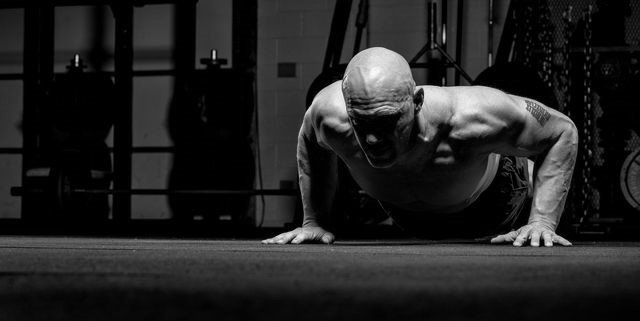The most effective method for building muscle for someone over 40.
Building muscle once you hit 40 requires 2 things: acceptance and diligence.
Acceptance of the aging process and diligence to work through your limitations.
Many biological processes slow down (ability to recover, metabolism, testosterone production) - affecting your ability to build muscle. But that doesn’t mean you can’t build muscle over 40.
Hypertrophy follows the same formula regardless of age:
Progressive Overload + Caloric Surplus + Recovery = Built Muscle
You just need to recognise the rules of the age game and adapt accordingly.
This is where diligence comes in.
Diligence to train smart.
Diligence to track your calories.
Diligence to prioritise recovery.
HOW TO TRAIN SMART
Despite training since my 20s, my workout approach is remarkably different now I’m in my 40s.
Like an old muscle car needing its engine to warm up before it hits the road, I do the following to ensure my body continues to build strength as I age:
#1 LONGER WARM UPS
My previous warm ups were a quick movement pattern with the barbell before jumping into my working sets.
I found this sub-optimal as the weights I could lift became lighter and more difficult.
After doing 3 warm-up sets, my body became more primed and I can now bench, deadlift and squat the same numbers as I did 10 years ago. It just requires a longer warm up!
#2 REPS IN RESERVE
I used to lift to failure and with an intensity that would produce involuntary grunts.
That approach should be dialed back (a tiny bit) in your 40s and beyond. You still need intensity to elicit muscle adaptations but leave some gas in the tank.
This allows you to recover quicker and minimise risk of injury which will take time away from the gym.
#3 EXERCISE ADAPTABILITY
Squats, deadlifts, bench press, barbell rows and military presses are the best exercises to base a workout around.
But the reality is that some of these movements can cause niggles, pain or injury. So if your shoulder, knees, elbows or wrists ache (not uncommon as you age), then consider other exercises or modifications.
For example, if the bench press causes shoulder issues, use dumbbells. If squats hurt your knees, use the leg press.
The best exercise is one you can do safely and injury free. Don’t be afraid to steer away from the big compounds if they are not working for you.
#4 TRACK YOUR CALORIES
Building muscle requires protein and a caloric surplus.
When you first start out, it’s normal to underestimate how many calories you consume on a daily basis (you need to consume more than you burn).
For the first month, you should track what you’re consuming. Focus on proteins which help build muscle and repairs tissue post workout.
#5 OPTIMISE RECOVERY
Your body’s ability to recover once you hit 40 slows dramatically so optimising the recovery process will build muscle more efficiently.
This means:
Train 3 times a week. This allows adequate rest in between workouts allowing your body to recovery and adapt to the training stimulus.
Static Stretches. Muscle tightness becomes more pronounced as you age. Incorporating a daily stretching practice (especially around your upper back and hamstrings) will also benefit your strength gains as your range of motion vastly increases.
Sleep Hygiene. Sleep is your hidden superpower. Now that the kids are older, I can fall asleep and wake up at the same time each day. Ensuring my bedroom is dark and cool provides the perfect environment for a good night’s sleep. Leaving my phone in another room also helps.
Hypertrophy is available to all regardless of age.
Understanding your body’s limits will allow you to build muscle in your 40s (and well into your 50s and 60s).
It is definitely worth your time and effort.

